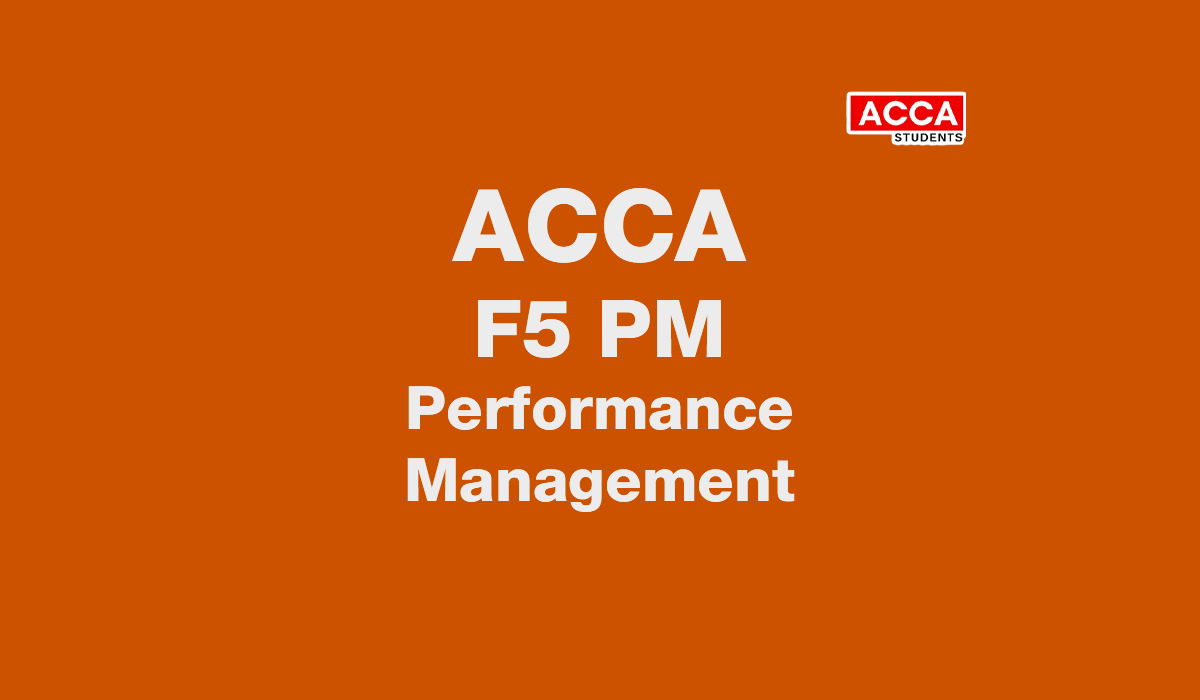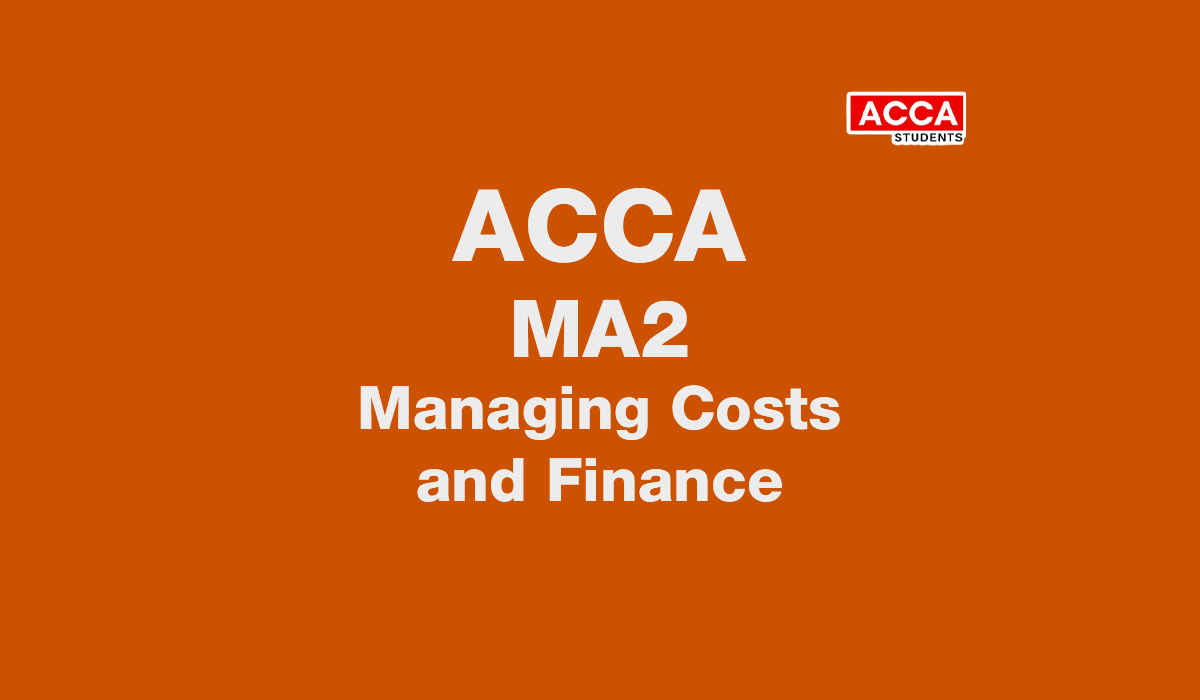Are you searching for comprehensive study materials and resources to excel in your ACCA F5 Performance Management examination? The Workbook F5 (PM) Performance Management module represents a crucial stepping stone in your ACCA journey, combining strategic decision-making with practical analytical skills that modern businesses demand.
This guide provides everything you need to understand the F5 module, master its concepts, and develop an effective study strategy using BPP materials and structured preparation techniques.
What is ACCA F5 Performance Management Module?
The ACCA F5 Performance Management module forms part of the Applied Skills level in the ACCA qualification structure. This paper focuses on how organizations measure, monitor, and manage their performance to achieve strategic objectives.
Core Areas Covered in F5 Performance Management
The syllabus encompasses five main areas that test your understanding of performance measurement and management:
- Specialist Cost and Management Accounting Techniques – Advanced costing methods including activity-based costing, life-cycle costing, and target costing
- Decision-Making Techniques – Linear programming, learning curves, and relevant costing for short-term decisions
- Budgetary Control and Standard Costing – Planning budgets, variance analysis, and performance evaluation systems
- Performance Measurement and Control – Key performance indicators, balanced scorecards, and divisional performance measurement
- Long-Term Decision Making – Investment appraisal techniques, risk analysis, and strategic decision-making processes
Assessment Format and Structure
| Component | Details |
|---|---|
| Exam Duration | 3 hours |
| Question Types | 15 objective test questions (2 marks each) + 3 constructed response questions (20 marks each) |
| Total Marks | 100 marks |
| Pass Mark | 50% |
| CBE Format | Computer-based examination |
The examination tests both technical knowledge and practical application through scenario-based questions that mirror real business situations.
How Difficult is ACCA F5 Performance Management?
Understanding the difficulty level of F5 helps you prepare realistic study expectations and allocate sufficient time for preparation.
Complexity Assessment
F5 is generally considered moderately challenging within the Applied Skills level. The difficulty stems from several factors:
Mathematical Requirements: Unlike purely theoretical papers, F5 demands strong numerical skills and the ability to perform complex calculations under time pressure.
Conceptual Depth: You must understand not just how to apply techniques, but when and why specific methods are appropriate for different business scenarios.
Integration Skills: The paper requires you to combine knowledge from multiple areas, linking costing techniques with strategic decision-making and performance measurement.
Common Student Challenges
Students typically struggle with these aspects of F5:
- Time Management – Balancing calculation-heavy questions with written analysis
- Variance Analysis – Understanding the interconnections between different types of variances
- Linear Programming – Grasping graphical and algebraic solution methods
- Performance Measurement – Evaluating the appropriateness of different performance metrics
Success Rates and Statistics
Historical data suggests F5 maintains a pass rate between 45-55%, indicating that with proper preparation, success is achievable. The key differentiator between successful and unsuccessful candidates is consistent practice with past papers and understanding of underlying business contexts.
Why Choose BPP for ACCA F5 Preparation?
BPP stands as one of the most trusted names in ACCA education, offering materials specifically designed to align with ACCA’s learning outcomes and examination requirements.
BPP’s Educational Excellence
BPP’s approach to F5 preparation offers several distinct advantages:
Examiner Input: BPP materials are developed with input from actual ACCA examiners, ensuring content relevance and accuracy.
Structured Learning Path: The materials follow a logical progression that builds complexity gradually, helping you master foundational concepts before tackling advanced applications.
Real-World Integration: BPP emphasizes practical application through case studies and examples drawn from actual business scenarios.
Comprehensive Resource Portfolio
BPP provides multiple learning resources for F5:
- Study Text – Comprehensive coverage of all syllabus areas with detailed explanations
- Practice & Revision Kit – Extensive question bank with examiner’s answers and marking schemes
- Passcards – Condensed revision notes for last-minute preparation
- Online Resources – Interactive learning tools and progress tracking systems
Benefits of Using PDF Workbooks for F5 Study
PDF workbooks offer unique advantages for ACCA F5 preparation, particularly given the paper’s technical and calculation-intensive nature.
Accessibility and Convenience
PDF format provides unmatched flexibility for your study routine:
Multi-Device Access: Study on laptops, tablets, or smartphones without carrying physical books Search Functionality: Quickly locate specific topics, formulas, or examples using search features Annotation Tools: Highlight important concepts and add personal notes directly to the material
Enhanced Learning Features
Modern PDF workbooks incorporate interactive elements that enhance comprehension:
- Hyperlinked Contents – Navigate quickly between related topics and chapters
- Embedded Calculations – Interactive spreadsheets for practicing numerical techniques
- Progress Tracking – Built-in features to monitor your study progress and identify weak areas
Cost-Effectiveness and Updates
PDF materials offer economic advantages while maintaining current content:
Immediate Updates: Publishers can distribute updated content instantly, ensuring you have the latest syllabus changes and examination guidance.
Reduced Costs: PDF versions typically cost less than printed materials while offering identical content quality.
Environmental Benefits: Digital materials support sustainable learning practices without compromising educational value.
How to Plan Your ACCA F5 Study Schedule
Creating a structured study plan is essential for F5 success, given the breadth of topics and the need for extensive practice.
Study Timeline Recommendations
Your study duration should reflect your background and available study time:
Intensive Schedule (8-10 weeks): Suitable for students with strong mathematical backgrounds studying 15-20 hours weekly Standard Schedule (12-14 weeks): Recommended for most students, requiring 10-15 hours weekly commitment Extended Schedule (16-18 weeks): Ideal for part-time students or those needing extra time for mathematical concepts
Weekly Study Structure
Design your weekly schedule to balance learning, practice, and revision:
| Day | Focus Area | Duration |
|---|---|---|
| Monday | New Topic Learning | 2-3 hours |
| Tuesday | Practice Questions | 2 hours |
| Wednesday | Revision of Previous Topics | 1-2 hours |
| Thursday | New Topic Learning | 2-3 hours |
| Friday | Practice Questions | 2 hours |
| Saturday | Mock Exam/Comprehensive Practice | 3 hours |
| Sunday | Review and Weak Area Focus | 1-2 hours |
Topic Prioritization Strategy
Allocate study time based on exam weightings and your personal strengths:
High Priority Topics (40-45% of study time):
- Budgeting and Standard Costing
- Performance Measurement Systems
- Decision-Making Techniques
Medium Priority Topics (35-40% of study time):
- Specialist Costing Techniques
- Divisional Performance and Transfer Pricing
Lower Priority Topics (15-20% of study time):
- Risk and Uncertainty in Decision Making
- Non-Financial Performance Indicators
How to Effectively Prepare for ACCA F5 Performance Management Exam
Effective preparation for F5 requires a multi-faceted approach combining theoretical understanding with practical application skills.
Building Strong Foundations
Start your preparation by establishing solid conceptual understanding:
Master the Fundamentals: Ensure you understand basic cost accounting concepts from F2 before tackling advanced F5 topics. This includes understanding cost behavior, absorption costing, and basic variance analysis.
Develop Formula Fluency: F5 contains numerous formulas that you must apply accurately under exam conditions. Create formula sheets and practice applying them in different contexts.
Understand Business Context: Performance management isn’t just about calculations – you need to understand why businesses use these techniques and how they support strategic objectives.
Practice-Based Learning Approach
F5 success depends heavily on consistent practice with increasingly complex scenarios:
Question Bank Utilization: Work through extensive question banks, focusing on understanding not just the correct answers but also why incorrect options are wrong.
Timed Practice Sessions: Simulate exam conditions regularly to develop time management skills and build confidence with the CBE format.
Error Analysis: Keep a record of mistakes and review them regularly to avoid repeating similar errors in the examination.
Integration and Application Skills
Develop higher-level skills that distinguish successful F5 candidates:
Cross-Topic Integration: Practice questions that combine multiple syllabus areas, such as using standard costing within performance measurement systems.
Critical Evaluation: Don’t just calculate – develop the ability to evaluate the appropriateness of different techniques for specific business situations.
Written Communication: F5 requires clear written explanations alongside calculations. Practice articulating your reasoning concisely and professionally.
Strategic Study Techniques for F5 Success
The Layered Learning Method
Implement a three-layer approach to master F5 concepts:
Layer 1 – Basic Understanding: Read the topic, understand key definitions, and work through simple examples Layer 2 – Application Practice: Attempt practice questions of varying difficulty levels and understand examiner’s model answers
Layer 3 – Critical Analysis: Evaluate when and why to use specific techniques, considering business context and limitations
Memory and Retention Techniques
F5’s technical nature requires effective memory strategies:
Formula Cards: Create physical or digital cards with formulas on one side and applications on the other Mind Mapping: Visual representations help connect related concepts across different syllabus areas Regular Review Cycles: Implement spaced repetition to maintain knowledge of topics studied earlier
Last Minute Preparation Guide for ACCA F5
As your examination date approaches, focus your efforts on high-impact revision activities that maximize your chances of success.
Final Week Strategy
Your final week should emphasize consolidation rather than learning new material:
Days 7-5 Before Exam: Complete full-length mock examinations under timed conditions, focusing on identifying and addressing remaining weak areas.
Days 4-3 Before Exam: Intensive revision of key formulas, ratios, and decision-making frameworks. Review your error log and ensure you understand common mistake patterns.
Days 2-1 Before Exam: Light revision focusing on formula sheets and key concepts. Avoid intensive study that might increase anxiety levels.
Examination Day Preparation
Technical Preparation: Ensure you’re comfortable with the CBE interface and calculator functions Time Management Plan: Know how long to spend on each question section and stick to your time allocation Mental Preparation: Get adequate sleep and arrive early to settle into the examination environment
Key Formula Quick Reference
Essential formulas you must know instantly:
- Standard Costing Variances: Material price, usage, labor rate, efficiency, overhead expenditure, volume, and efficiency variances
- Investment Appraisal: NPV, IRR, payback period, and accounting rate of return calculations
- Linear Programming: Objective function formulation and shadow price interpretation
- Learning Curve: Wright’s learning curve model and Crawford’s unit curve approach
Performance Measurement Systems and Modern Business Applications
Understanding how performance measurement works in contemporary organizations is crucial for F5 success and your future career development.
Traditional vs. Modern Approaches
F5 covers the evolution from traditional financial measures to comprehensive performance management systems:
Traditional Methods: Focus primarily on financial metrics such as profit, return on investment, and cost variances. While important, these provide limited insight into long-term value creation.
Modern Integrated Systems: Combine financial and non-financial measures through frameworks like the Balanced Scorecard, which evaluates performance across financial, customer, internal process, and learning perspectives.
Key Performance Indicators (KPIs) in Practice
Successful organizations use KPIs strategically to drive behavior and achieve objectives:
Financial KPIs: Revenue growth, profit margins, return on assets, and economic value added Customer KPIs: Customer satisfaction scores, retention rates, and market share metrics Process KPIs: Cycle times, quality measures, and efficiency indicators Learning KPIs: Employee development hours, innovation indices, and knowledge management metrics
Advanced Decision-Making Techniques
Linear Programming Applications
Linear programming represents one of F5’s most challenging technical areas, requiring both mathematical skills and business judgment.
Understanding the method involves three key steps:
- Problem Formulation – Identifying the objective function and constraints from business scenarios
- Graphical Solution – Finding optimal solutions for two-variable problems using feasible region analysis
- Sensitivity Analysis – Interpreting shadow prices and understanding the impact of constraint changes
Risk and Uncertainty Management
Modern businesses operate in uncertain environments, making risk analysis essential for effective decision-making:
Probability Analysis: Using expected values and probability distributions to evaluate risky investments Sensitivity Analysis: Understanding how changes in key variables affect decision outcomes Scenario Planning: Developing multiple future scenarios to test decision robustness
Key Takeaways
- ACCA F5 Performance Management combines technical accounting skills with strategic business understanding, requiring balanced preparation across multiple competency areas
- BPP materials provide structured, examiner-approved content that aligns closely with ACCA requirements and examination expectations
- PDF workbooks offer flexible, cost-effective study solutions with enhanced features for technical subjects like F5
- Effective preparation requires minimum 12-14 weeks of structured study, emphasizing consistent practice alongside theoretical learning
- Success depends on mastering both calculations and business applications, with strong time management skills essential for examination performance
- Last-minute preparation should focus on formula consolidation and mock examination practice rather than learning new concepts
- Integration skills distinguish successful candidates, requiring understanding of how different techniques support overall business performance management
Frequently Asked Questions
Q: How long should I spend studying for ACCA F5 Performance Management? Most students require 12-14 weeks of preparation, studying 10-15 hours weekly. Students with strong mathematical backgrounds may succeed with 8-10 weeks, while those needing extra support might extend to 16-18 weeks.
Q: What makes F5 different from other ACCA papers? F5 uniquely combines technical calculations with strategic business analysis. Unlike purely theoretical papers, F5 requires strong numerical skills alongside the ability to evaluate business performance and recommend improvements.
Q: Are BPP materials sufficient for F5 preparation? BPP materials provide comprehensive coverage aligned with ACCA requirements. However, supplement with ACCA’s own practice platform and past papers for additional question practice and familiarization with the CBE format.
Q: What topics should I prioritize in F5? Focus primarily on budgeting and standard costing (high exam weighting), performance measurement systems, and decision-making techniques. These areas typically account for 60-70% of examination marks.
Q: How important are written explanations in F5? Written communication skills are crucial. Many questions require clear explanations of your calculations and recommendations. Practice articulating your reasoning concisely and professionally throughout your preparation.
Q: What calculator functions are most useful for F5? Master statistical functions for standard deviation calculations, financial functions for investment appraisal, and programming capabilities for iterative calculations. Practice using these features efficiently under time pressure.
Conclusion
The Workbook F5 (PM) Performance Management module represents a pivotal stage in your ACCA journey, bridging technical accounting knowledge with strategic business skills that modern organizations value highly. Success in F5 requires dedication, structured preparation, and consistent practice with increasingly complex business scenarios.
Your investment in quality study materials, particularly BPP resources and comprehensive PDF workbooks, provides the foundation for examination success and professional competence. Remember that F5 skills extend far beyond the examination room – the performance management techniques you master will prove invaluable throughout your accounting and finance career.
With proper planning, consistent effort, and strategic use of available resources, you can confidently approach the ACCA F5 Performance Management examination and achieve the success that opens doors to advanced ACCA papers and enhanced career opportunities.



